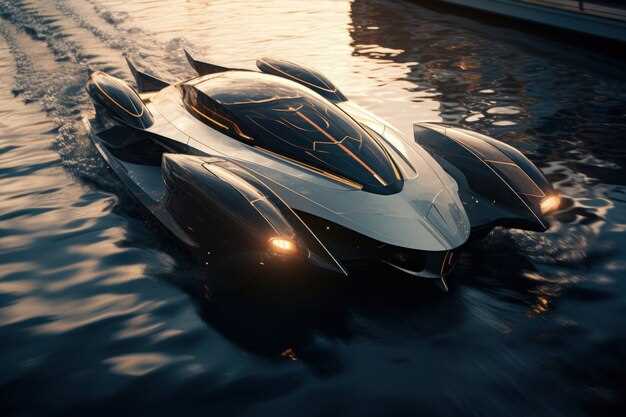Luxury cars stand out due to their unparalleled comfort, cutting-edge technology, and exquisite craftsmanship. Prioritize features that elevate your driving experience beyond the ordinary. Look for high-quality materials, such as fine leather and polished wood, which not only provide comfort but also enhance the aesthetic appeal of the vehicle.
Next, assess the advanced technology integrated into the car. Innovative infotainment systems, state-of-the-art sound systems, and driver-assistance features play a significant role in defining luxury. These technological advancements not only improve safety but also ensure a connected and enjoyable drive.
Consider performance capabilities as well. Luxury vehicles often come with powerful engines and superior handling. Opt for models that offer various driving modes to customize your experience and adapt to different road conditions. This level of performance contributes to a sense of confidence and control that is distinctive to luxury automobiles.
Finally, evaluate the exclusivity factor. Limited production numbers or bespoke options can greatly enhance the allure of a luxury car. The ability to personalize key features gives drivers a sense of ownership that adds to the overall experience. By focusing on these elements, you can truly appreciate what makes a luxury car exceptional.
What Distinguishes Luxury Car Performance Metrics?
Luxury cars prioritize performance metrics that go beyond mere speed, incorporating a refined balance of power, handling, and comfort. Look for models featuring powerful engines with high horsepower and torque ratings that ensure dynamic acceleration. Typically, a luxury vehicle boasts a 0-60 mph time under 5 seconds.
Horsepower is crucial, but torque ratings at low RPMs enhance drivability in everyday conditions. A peak torque figure exceeding 300 lb-ft is common among luxury sedans, allowing for smooth and responsive acceleration.
Handling characteristics define the luxury experience. Effective weight distribution and sophisticated suspension systems improve cornering capabilities, often accompanied by adaptive damping technology. A turning radius of fewer than 36 feet enhances maneuverability, making tight spaces manageable.
Hybrid and electric luxury cars demonstrate that performance metrics can also include efficiency. Outstanding electric range and rapid charging capabilities, such as achieving 80% charge in under 30 minutes, are increasingly important for discerning buyers.
Additionally, noise isolation contributes to the overall luxury feel. A decibel level inside the cabin below 70 dB at highway speeds reflects a commitment to passenger comfort. High-quality materials and advanced sound deadening technologies contribute to this serene environment.
Advanced driver-assistance systems (ADAS) also elevate performance standards, incorporating adaptive cruise control and lane-keeping assistance that enhance safety without compromising driving enjoyment. Systems that offer seamless integration create a user-friendly experience without detracting from performance.
To sum up, focus on a luxury car’s engine power, torque characteristics, handling precision, quietness, and technology to evaluate its performance metrics thoroughly. These features ensure a refined driving experience that stands out in the luxury segment.
Identifying High-Quality Materials in Luxury Vehicle Interiors
Examine the interior materials closely to determine their quality. Premium vehicles frequently integrate leather, wood, metal, and high-grade plastics. Each material has distinctive characteristics that signal quality.
- Leather: Look for full-grain leather. It retains the natural texture and markings, enhancing its appeal. Pay attention to the suppleness and rich aroma; synthetic leathers often lack these features.
- Wood: Genuine wood trim should display a smooth finish with a consistent grain pattern. Authentic veneers are lighter and warmer to the touch, while synthetics tend to feel cold and plastic-like.
- Metal: Examine the metal finishes. High-quality interiors use brushed aluminum or polished stainless steel. These materials provide a luxurious look and feel, while lower-grade metals may appear dull or flimsy.
- Plastics: Premium vehicles use soft-touch plastics that resist scratches and don’t easily fade. Press down on the surface; quality plastics should yield slightly but return to their original shape without leaving marks.
Don’t overlook the stitching. Fine craftsmanship is evident in clean, straight seams. Double stitching often indicates a higher level of attention to detail.
Check for customization options. Luxury brands often offer a range of materials and finishes, allowing buyers to tailor the interior to personal preference. This level of personalization speaks volumes about the brand’s commitment to quality.
Finally, experience the overall atmosphere. High-quality materials contribute to a cohesive and inviting environment that enhances driving pleasure. Every detail should reflect luxury, from the dashboard to the door panels.
How Advanced Technology Enhances the Luxury Driving Experience
Luxury cars integrate advanced technology to elevate your driving experience. Features like adaptive cruise control maintain a safe distance from other vehicles, allowing you to enjoy the ride without constantly monitoring your speed. These systems adjust automatically, ensuring a seamless journey on highways or in traffic.
Next, consider smartphone integration. Systems such as Apple CarPlay and Android Auto allow effortless connection to your mobile device. Accessing navigation apps, music libraries, and communication tools becomes intuitive, minimizing distractions while keeping you connected on the go.
Advanced driver-assistance systems (ADAS) take safety to new heights. Lane-keeping assist gently nudges you back to your lane if you drift, while automatic emergency braking can prevent collisions by applying the brakes when necessary. These innovations enhance confidence behind the wheel, making every drive more enjoyable.
Luxury vehicles often feature high-end infotainment systems equipped with touchscreens and voice recognition. This technology simplifies controls for climate, media, and navigation. Voice commands allow you to adjust settings without taking your hands off the wheel, promoting a focused driving experience.
Comfort is elevated through features like climate control systems that adjust temperature based on individual preferences. Heated and ventilated seats add a touch of luxury, ensuring comfort regardless of weather conditions. Some models even offer massage functions, transforming mundane drives into relaxing retreats.
Lastly, premium sound systems deliver an immersive audio experience. Brands like Bang & Olufsen and Bowers & Wilkins fine-tune acoustics to create crystal-clear sound, making every drive feel like a private concert. Customizable sound settings allow you to tailor the experience to your liking.
Incorporating these technologies not only enhances comfort and safety but also makes the luxury driving experience remarkably enjoyable. Stay informed about the features that best suit your preferences and elevate your time behind the wheel.
Understanding the Role of Customization in Luxury Automobiles
Customization transforms a luxury car into a personal expression. Customers can choose everything from exterior paint colors to the type of leather used in the interior. This level of personalization enhances ownership satisfaction and creates a more intimate connection between the driver and the vehicle.
Many high-end brands offer bespoke options, allowing clients to specify unique features tailored to their tastes. For example, Rolls-Royce offers the “Bespoke” program, where buyers can select from a wide array of materials, finishes, and design elements, ensuring that each car is one-of-a-kind.
Beyond aesthetics, customization often extends to performance enhancements. Clients can request upgraded engines, modified suspensions, and advanced technological features that align with their driving preferences. This ensures that the car not only looks exceptional but also delivers an exhilarating driving experience.
Luxury brands invest heavily in personalization programs, recognizing that such offerings distinguish them from mainstream manufacturers. The ability to customize elevates the brand’s prestige and fosters a sense of exclusivity. It transforms the purchasing process into an experience, as clients collaborate with designers and engineers to bring their visions to life.
Furthermore, the resale value of customized luxury cars can be significantly higher. Unique features can attract collectors and enthusiasts, making the car a desirable asset in the luxury market. Buyers often find that a personalized vehicle stands out, maintaining its appeal over time.
Ultimately, customization in luxury automobiles is not just an option; it’s a defining characteristic that enhances the ownership experience and reflects personal style and sophistication. Engaging with customization options allows individuals to cultivate a connection with their vehicles that standard models simply cannot offer.
Evaluating Safety Features Unique to High-End Cars
High-end cars often integrate cutting-edge safety technology that sets them apart from standard vehicles. These features not only enhance passenger protection but also contribute to overall driving confidence. Take, for example, advanced driver-assistance systems (ADAS) that include adaptive cruise control, lane-keeping assist, and automatic emergency braking. These systems significantly reduce the likelihood of collisions by actively monitoring surroundings and intervening when necessary.
Many luxury vehicles employ sophisticated sensor arrays, including radar and cameras, to create a comprehensive safety network. This network can detect potential hazards before they arise, allowing for immediate driver alerts. Features like blind-spot monitoring and cross-traffic alerts help prevent accidents when changing lanes or reversing, providing peace of mind in busy environments.
Another hallmark of luxury safety is the adoption of high-strength materials in the construction of the vehicle. Aluminum, carbon fiber, and advanced steel alloys increase structural integrity, protecting occupants in the event of a crash. Brands like Volvo and Mercedes-Benz have pioneered safety innovations that include pedestrian detection systems, which further emphasize their commitment to a safer driving experience.
In addition, many upscale models offer customizable safety settings that adapt to individual driver preferences and habits. This includes adjustable sensitivity levels for collision warning systems and personalized alerts, allowing drivers to tailor the technology to their specific needs.
Furthermore, manufacturers often provide regular software updates for their vehicles, enhancing the performance of safety features over time. This commitment ensures that high-end cars stay current with the latest safety protocols and technologies, making them more reliable than their counterparts.
Ultimately, investing in a luxury car means prioritizing not only comfort and performance but also a comprehensive suite of safety features that reflect the latest advancements in automotive technology.
Exploring the Impact of Brand Heritage on Luxury Car Value
Brand heritage significantly influences luxury car value. Consumers often associate a rich history with prestige, driving demand and higher market prices. Brands with a longstanding reputation, like Rolls-Royce and Ferrari, command attention due to their legacy.
The emotional connection formed through heritage fosters loyalty. Buyers are more inclined to invest in vehicles from brands with stories of craftsmanship, innovation, and exclusivity. These narratives enhance perceived value, making such vehicles more desirable over time.
Here’s a look at how brand heritage translates to luxury car valuation:
| Brand | Year Established | Key Heritage Features | Impact on Value |
|---|---|---|---|
| Rolls-Royce | 1904 | Handcrafted luxury, bespoke options | High resale value |
| Ferrari | 1939 | Racing victories, Italian craftsmanship | Strong demand in collector markets |
| Porsche | 1931 | Iconic design, performance lineage | Consistent appreciation |
| Aston Martin | 1913 | Association with James Bond, luxury craftsmanship | High auction prices |
Maintaining brand stories and traditions enhances longevity in market relevance. New models that honor original designs or features often capture consumer interest, reinforcing brand loyalty. The deeper a brand’s heritage, the stronger its position in a competitive market.
Investors and collectors recognize that heritage translates into security in luxury car investments. Cars from heritage-rich brands have a propensity to retain and even appreciate in value. Thus, heritage becomes not just a marketing tool but a cornerstone of luxury car pricing strategy.






